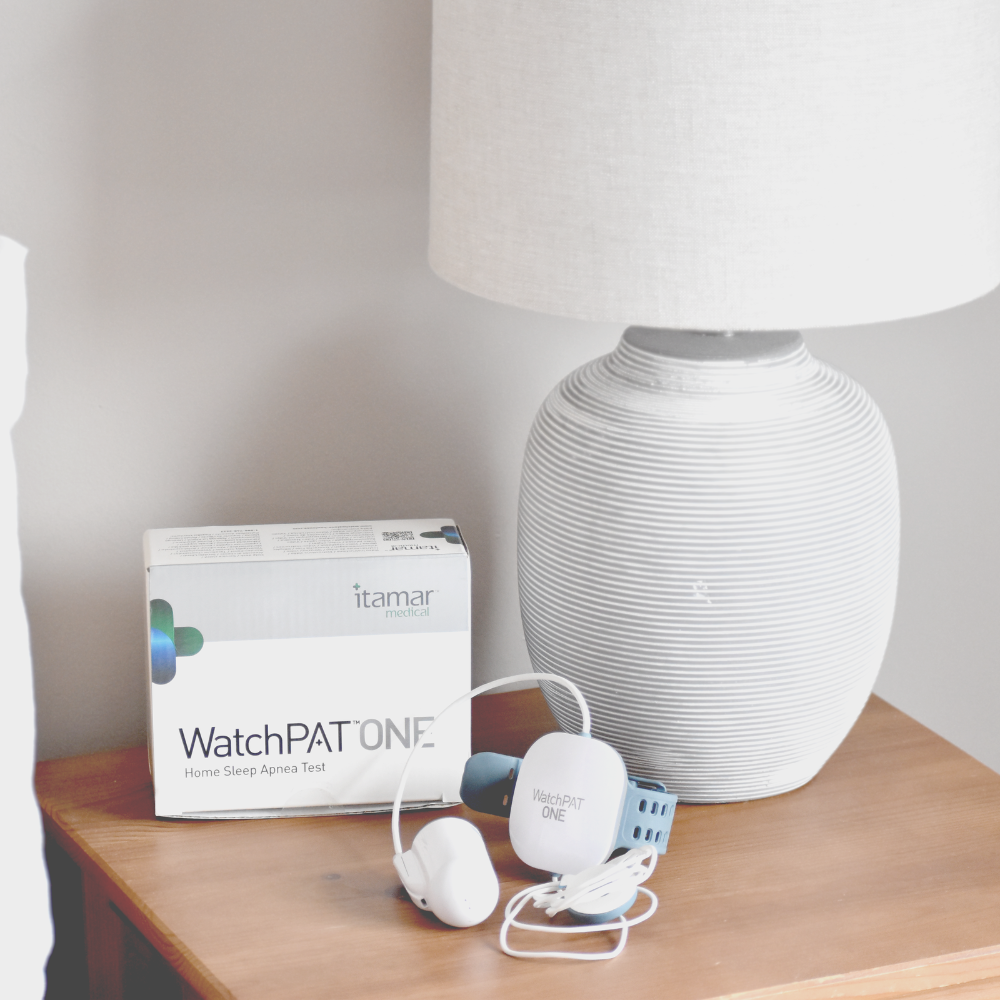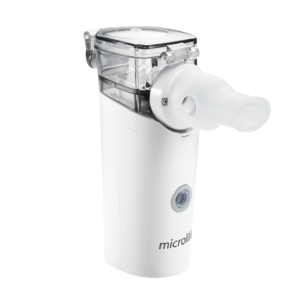Fact Checked
Intus Healthcare’s writers, customer service team, and sleep experts review and ensure this information is accurate.
Last updated on May 31st, 2024 at 09:16 am
COPD and Sleep Apnoea
Chronic Obstructive Pulmonary Disease (COPD) and Obstructive Sleep Apnoea (OSA) are two distinct but interrelated health conditions that can co-exist, often complicating one another and impacting daily activities and quality of life. This article will cover the relationship between these conditions and provide insights into managing symptoms effectively.
What is COPD?
Chronic Obstructive Pulmonary Disease is a long-term lung condition which causes difficulty breathing. It refers to a group of related lung conditions, primarily chronic bronchitis and emphysema. COPD causes the airways in your lungs to become narrow and blocked, making it difficult to exhale air properly. Symptoms include coughing, wheezing, shortness of breath and chest tightness.
What is Sleep Apnoea
Obstructive Sleep Apnoea is a sleep condition that causes continuous sleep disruptions. It happens because the muscles in the upper airways relax significantly, blocking the airways momentarily. OSA can wake you up many times during the night without you even realising it, leading to poor sleep quality.
What causes COPD and OSA?
COPD and OSA are common conditions estimated to affect at least 10% of the general population(1). People with COPD may have a higher risk of developing OSA, and vice versa. Having Sleep Apnoea does not mean you will develop COPD, and having COPD does not mean you will develop Sleep Apnoea; however, they can appear together. If you have both conditions, the combination is called Overlap Syndrome. It has been estimated at least 10 to 15% of people with Chronic Obstructive Pulmonary Disease also have OSA (2).
The reasons for this overlap has yet to be entirely understood. However, several factors contribute to the development of overlap syndrome:
Smoking: Both conditions share some common risk factors. Smoking is a significant risk factor for COPD, and it can also contribute to OSA. Smoking introduces harmful chemicals and irritants into the airways and lungs. These irritants can lead to chronic inflammation, increased mucus production, and damage to the lung tissue. Smoking can accumulate fatty deposits in the upper airway, contributing to airway obstruction during sleep.
Weight: Obesity is another shared risk factor that increases the likelihood of both conditions. Excess fat deposits, particularly in the neck and throat area, can contribute to airway obstruction, making breathing more difficult. It’s important to note that while obesity is a common factor in overlap syndrome, not all individuals with these conditions are obese, and not all obese individuals develop overlap syndrome.
Inflammation: Inflammation plays a role in developing and progressing COPD and OSA. Inflammation in the airways and tissues of the respiratory system can lead to COPD, while inflammation in the throat and upper airway can contribute to OSA. Chronic inflammation can further worsen the overlap between the two conditions.
Genetics: Some individuals may have a genetic predisposition that makes them more susceptible to both conditions. Genetic factors can influence the structure and function of the airways and respiratory muscles, increasing the risk of developing these conditions. In COPD, the airways become narrowed and obstructed due to chronic inflammation and damage. In OSA, the upper airway collapses or becomes blocked during sleep. These problems can compound each other, making breathing more challenging during the day and at night.
Overlap Syndrome can worsen both conditions, causing more severe symptoms and increased health risks. It’s important to note that while these factors contribute to the development of overlap syndrome, not everyone with COPD or OSA will develop both conditions. The overlap is more common in individuals with multiple risk factors and specific vulnerabilities.

What are the risks of overlap syndrome?
Overlap Syndrome increases the risk of other health conditions, these include:
Hypercapnia: This condition is characterised by abnormally high levels of carbon dioxide (CO2) in the blood. In individuals with COPD, the ability to exchange oxygen and carbon dioxide in the lungs is compromised due to narrowed and obstructed airways. Resulting in an accumulation of CO2 in the blood, leading to hypercapnia. OSA causes repeated episodes of interrupted breathing during sleep, which can disrupt the body’s balance of oxygen and CO2.
Cardiovascular complications: Overlap syndrome increases the risk of cardiovascular diseases, including hypertension, coronary artery disease, and arrhythmias. Both conditions can independently contribute to cardiovascular issues, and when they co-exist, the risk is heightened.
Increased risk of infections: COPD and OSA weaken the immune system, making individuals more susceptible to respiratory infections, such as pneumonia and bronchitis. Overlap Syndrome can exacerbate this, leading to more frequent and severe diseases.
Increased sleepiness: Both conditions make it difficult to gain quality sleep; frequent sleep interruptions can leave you excessively tired. This can result in severe fatigue, impair cognitive function, and increase the risk of accidents, including falls and motor vehicle accidents.
Mental health problems: Chronic fatigue, impaired sleep, and reduced quality of life associated with untreated overlap syndrome can contribute to low mood and mental health issues such as depression and anxiety.
How do you know if you have the conditions?
Treating overlap syndrome is extremely important for your health; if you already have one of the conditions, assess if you have symptoms of the other.
Symptoms of OSA
- Chronic snoring
- Breathing pausing during sleep.
- Waking up with a headache
- Daytime sleepiness

Sleep Apnoea Test
A quick and easy way to confirm if you do or do not have Sleep Apnoea is by taking a sleep test.
The Sleep Apnoea test requires one night of sleep data, and the results are sent to you within two working days. Taking the test puts you closer to understanding if you have overlap syndrome.
Symptoms of COPD
- Shortness of breath
- A persistent chesty cough
- Feeling breathless
- Wheezing
If you experience these symptoms, contact your healthcare provider, who may perform lung function tests such as spirometry, gas transfer testing and lung volume testing to determine the presence of COPD.
Diagnosing overlap syndrome can be challenging due to the overlapping symptoms and underdiagnosis of OSA. A comprehensive evaluation by healthcare professionals with expertise in respiratory and sleep disorders is crucial for accurate diagnosis and effective management.

How is overlap syndrome treated?
There is no cure for either condition, but there are ways to manage the symptoms. The main treatment method for OSA is CPAP therapy. CPAP consists of a mask and machine that provides a flow of pressurised air to prevent airway obstructions during sleep. CPAP can benefit those with Overlap Syndrome by supporting Sleep Apnoea symptoms and helping maintain oxygen levels.
A widely used treatment method for Chronic Obstructive Pulmonary Disease is using a nebuliser or inhaler to administer medication. The medication makes it easier to breathe by relaxing and widening your airways. Nebulisers are often preferred to inhalers as they deliver medication directly to the lungs as a fine mist, allowing it to work more quickly and effectively than a standard inhaler.
Other ways to manage overlap syndrome include lifestyle improvements, such as:
- Avoiding alcohol
- Quitting smoking
- Practising good sleep hygiene
- Breathing exercises
- Keeping a healthy weight
- Reducing and managing stress
- Regular physical exercise
Conclusion
Overlap Syndrome may complicate the management of COPD and Sleep Apnoea, but remember that not everyone with one of these conditions will develop both. Overlap Syndrome can be treated to prevent risks and side effects mentioned in this article.
If you suspect you may have overlap syndrome or experience symptoms of either condition, seek guidance from healthcare professionals who can provide proper diagnosis and treatment options. Effective management can enhance your quality of life and overall well-being.
REFERENCES
- Ioachimescu OC (2022) Chronic Obstructive Pulmonary Disease-Obstructive Sleep Apnoea Overlap: More Than a Casual Acquaintance. Available at: https://www.ncbi.nlm.nih.gov/pmc/articles/PMC9887423/. Accessed: 14.12.2023
- Koch AL (2020) Obstructive Sleep Apnea and Airway Dimensions in Chronic Obstructive Pulmonary Disease. Available at: https://www.atsjournals.org/doi/10.1513/AnnalsATS.201903-220RL. Accessed: 13.12.2023








